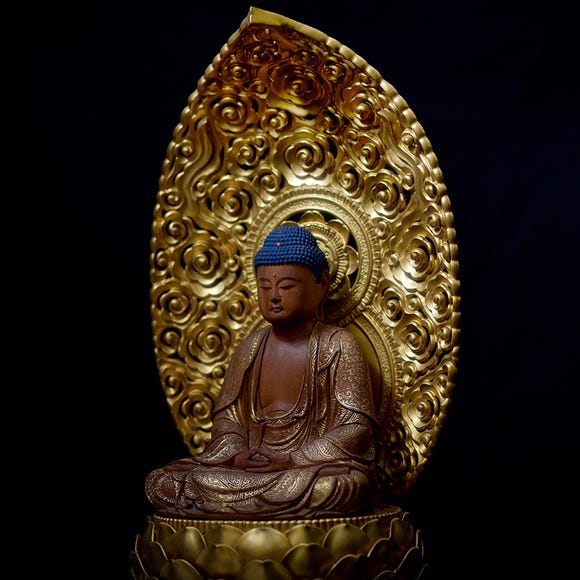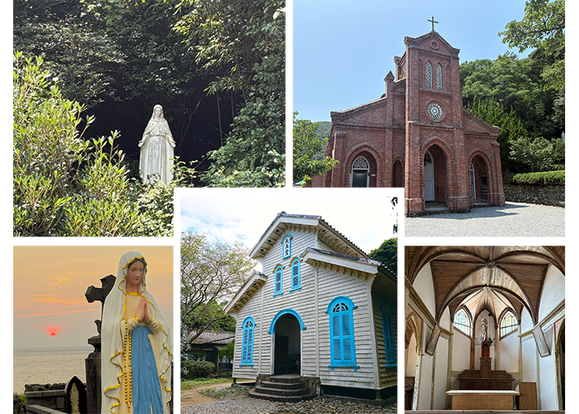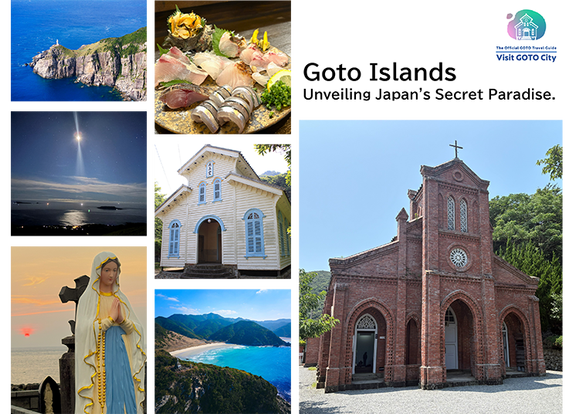
Japan Winter 2025: National Holidays, Seasonal Festivals & Must-See Spots
- Written by: Chien-Huang
As autumn’s colors fade, Japan welcomes the cozy charm of winter—filled with dazzling illuminations, snowy landscapes, and comforting seasonal cuisine. Whether you’re marveling at the grandeur of the Sapporo Snow Festival, strolling through Tokyo and Osaka’s glittering light displays, or savoring a romantic night in Kyoto’s historic streets, winter in Japan is pure magic. To help you make the most of this season, we’ve curated a complete guide to Japan’s winter holidays, major events, and travel tips—perfect for both short getaways and in-depth journeys into Japan’s winter wonderland.
(Main photo: PIXTA)
(This article contains sponsored content)
- Table of Contents
-
- Japan Winter Holidays 2025–2026: Complete Guide for December to February
- Winter Highlights: Illuminations, Snow Festivals & New Year Shrine Visits
- Christmas in Japan: From Hokkaido to Kansai, Step Into a Dazzling Winter of Lights
- New Year in Japan: Hatsumode, Osechi Ryori & the Excitement of Lucky Bags
- Sapporo Snow Festival: Hokkaido’s Most Spectacular Winter Celebration
Japan Winter Holidays 2025–2026: Complete Guide for December to February

December 29–30: Year-End Holidays (Nenmatsu yasumi)
Although not official national holidays, most government offices and private companies customarily close during this period, with only banks remaining open. Known as the “New Year preparation period,” shops bustle with customers buying decorations and enjoying end-of-year deals, while families clean their homes and prepare festive dishes. The atmosphere throughout Japan is filled with anticipation for the coming year. Many stores shorten business hours, and restaurants and hotels can get crowded, so plan ahead and check closure notices to avoid disruptions to your trip.
December 31: Omisoka (New Year’s Eve)
New Year’s Eve, or Omisoka, is a symbolic day marking both closure and renewal. Nearly the entire country takes a break to celebrate. Traditional customs include eating toshikoshi soba (buckwheat noodles symbolizing longevity) and visiting temples to hear the Joya no Kane—108 bell tolls said to cleanse worldly desires. Many families stay up to welcome the new year, then visit shrines after midnight for their first prayers of the year. Another beloved tradition is watching Kohaku Uta Gassen, a long-running NHK music show that brings generations together to celebrate the year’s best songs before the countdown to midnight.
January 1: New Year’s Day (Ganjitsu)
New Year’s Day is Japan’s most important national holiday, symbolizing the start of a fresh year. Families gather to enjoy osechi ryori (traditional New Year’s dishes) and toso (spiced sake) while visiting shrines or temples for hatsumode (the first prayer of the year) to wish for health and happiness. Department stores and malls launch their famous fukubukuro (lucky bags), drawing huge crowds eager for bargains, and the festive energy fills every corner of the city.
January 2–3: New Year Holidays (Nenshi Kyuka)
While not officially designated national holidays, most companies remain closed, creating an extended break across Japan. Many people spend these days visiting relatives, exchanging New Year’s cards, and giving children otoshidama (New Year’s money). Temples and shrines stay crowded with visitors for hatsumode (New Year prayers), often resulting in long lines. Television networks air special New Year programs, and families gather at home to relax, watch TV, and enjoy peaceful moments together to start the year.
January 12: Coming of Age Day (Seijin no Hi)
Coming of Age Day celebrates those who have reached 20 years old, marking their transition into adulthood. Held on the second Monday of January each year, local city offices host seijin-shiki (coming-of-age ceremonies), inviting new adults to gather in formal attire—women in elegant furisode kimono and men in suits—to receive congratulations and encouragement from their communities. For Japanese people, it’s a major life milestone symbolizing independence, responsibility, and the start of adulthood.
February 11: National Foundation Day (Kenkoku Kinen no Hi)
National Foundation Day was established to commemorate the founding of Japan. Based on the Nihon Shoki (Chronicles of Japan), the date corresponds to the legendary enthronement of Emperor Jimmu, Japan’s first emperor. Officially designated as a national holiday in 1966, the day celebrates Japan’s founding spirit and fosters a sense of national pride. Across the country, shrines and temples hold special ceremonies, while some cities host parades, flag-raising events, and commemorative gatherings to honor the nation’s origins.
February 23: Emperor’s Birthday (Tennou Tanjoubi)
The Emperor’s Birthday is one of Japan’s most significant national holidays. Since Emperor Naruhito’s ascension to the throne in 2019, his birthday on February 23 has been designated as a national celebration. On this day, the Imperial Palace in Tokyo opens to the public, allowing visitors to enter the grounds, wave flags, and offer congratulations as the Emperor and his family make a rare appearance. For travelers, it’s a unique cultural experience and a rare chance to witness this momentous occasion in person.
Winter Highlights: Illuminations, Snow Festivals & New Year Shrine Visits
Check Japan’s winter holidays in advance to plan smoothly and avoid crowds. From dazzling Christmas lights and meaningful hatsumode (New Year shrine visits) to romantic snow festivals and exciting ski adventures, winter in Japan is full of unforgettable moments. Add these seasonal highlights to your itinerary and experience the magic for yourself.
Christmas in Japan: From Hokkaido to Kansai, Step Into a Dazzling Winter of Lights

From late November through Christmas, and often into the New Year, Japan transforms into a glowing wonderland. Landmarks, streets, and parks across the country sparkle with vibrant illuminations, while festive markets and performances fill the air with music and cheer.
In Hokkaido, the Sapporo White Illumination enchants visitors with snowy streets bathed in shimmering lights. Tokyo dazzles with famous displays at Roppongi Keyakizaka, Marunouchi, Tokyo Midtown, and Omotesando, plus a festive Christmas Market at Tokyo Skytree. Osaka shines with its grand Midosuji Illumination and the romantic light-up of Osaka Castle’s Nishinomaru Garden. For something unique, Kyoto’s Heian Shrine hosts a stunning projection mapping show blending tradition and technology. Wherever you go, Japan’s winter illuminations promise an unforgettable holiday experience.
-
 Nagoya Round-Trip Day Tour: Mitsui Outlet Park, Nagashima Onsen & Nabana no Sato Illumination
Nagoya Round-Trip Day Tour: Mitsui Outlet Park, Nagashima Onsen & Nabana no Sato Illumination
Photo: KKday -
 Ashikaga Flower Park Admission Ticket (Tochigi)
Ashikaga Flower Park Admission Ticket (Tochigi)
Photo: KKday -
 Ashikaga Flower Park Illumination & All-You-Can-Eat Crab Lunch
Ashikaga Flower Park Illumination & All-You-Can-Eat Crab Lunch
Photo: Klook -
 Yomiuriland Admission Ticket (Tokyo)
Yomiuriland Admission Ticket (Tokyo)
Photo: Klook -
 Kobe Port Ferris Wheel & Arima Onsen Night View Tour from Osaka
Kobe Port Ferris Wheel & Arima Onsen Night View Tour from Osaka
Photo: Klook -
 Amanohashidate, Ine no Funaya & Miyama Kayabuki no Sato Day Tour from Osaka
Amanohashidate, Ine no Funaya & Miyama Kayabuki no Sato Day Tour from Osaka
Photo: Klook
New Year in Japan: Hatsumode, Osechi Ryori & the Excitement of Lucky Bags

Japan’s New Year has a very different atmosphere from the Lunar New Year. It begins on New Year’s Eve with the Joya no Kane bell ringing, marking the end of the old year and the start of the new. On New Year’s Day, people visit shrines and temples for hatsumode (the year’s first prayer) to wish for good fortune and peace.
Expect large crowds at famous places such as Meiji Jingu in Tokyo, Fushimi Inari Taisha in Kyoto, and Kasuga Taisha in Nara, where visitors carry hamaya (lucky arrows) and the air is filled with festive energy.
Families also gather to enjoy osechi ryori (traditional New Year dishes), which are prepared in advance to avoid cooking during the holidays. Each dish has a special meaning: black beans for health, datemaki (rolled omelet) for learning and progress, and red and white kamaboko for happiness and celebration.
Another highlight of the season is fukubukuro (lucky bags). Department stores and fashion brands offer special New Year bags packed with surprises and exclusive items, attracting long lines early in the morning. Since some stores close during the holidays, it is best to check schedules in advance so you do not miss out.
Winter Skiing in Japan: The Powder Snow Paradise You Must Experience Once in Your Life

For many travelers, Japan is nothing short of a powder snow paradise. Every winter, ski enthusiasts from around the world come to experience its fine, dry snow. Japanese powder snow has tiny, low-moisture crystals that stay soft and light, making it ideal for smooth gliding without becoming icy or heavy.
Snow quality depends mainly on grain size and moisture. In Japan, each region offers its own unique conditions: Hokkaido and Tohoku are known for their light, dry snow thanks to low temperatures and humidity, while Niigata and Nagano boast heavy snowfall and wide slopes perfect for more adventurous skiers. Most resorts feature convenient lifts and cable cars to reach the top easily, along with rental gear for beginners.
First-time skiers are strongly encouraged to take lessons. Skiing can be challenging and requires guidance to ensure safety and confidence on the slopes. Many resorts offer professional courses for all levels, along with dining and shopping facilities for a complete resort experience. Family travelers will also find kid-friendly areas and amenities, making Japan’s ski resorts enjoyable for all ages.
-
 Hokkaido Teine Ski Day Tour: Gear, Shuttle, Instructor and Photo Service
Hokkaido Teine Ski Day Tour: Gear, Shuttle, Instructor and Photo Service
Photo: KKday -
 Mt. Fuji Yeti Ski Resort Day Tour: Sledding and Professional Ski Lessons
Mt. Fuji Yeti Ski Resort Day Tour: Sledding and Professional Ski Lessons
Photo: KKday -
 Kansai Ski & Onsen Day Tour: Rokko Mountain Snow Fun and Arima Onsen from Osaka
Kansai Ski & Onsen Day Tour: Rokko Mountain Snow Fun and Arima Onsen from Osaka
Photo: KKday -
 Hoshino Resorts Tomamu Ski Lessons with Photography
Hoshino Resorts Tomamu Ski Lessons with Photography
Photo: Klook -
 Hakuba Goryu 2-Day Northern Alps Powder Snow Tour
Hakuba Goryu 2-Day Northern Alps Powder Snow Tour
Photo: Klook -
 Kobe Snow & Onsen Day Trip: Rokko Mountain Ski or Snow Play and Arima Onsen from Osaka
Kobe Snow & Onsen Day Trip: Rokko Mountain Ski or Snow Play and Arima Onsen from Osaka
Photo: Klook
Sapporo Snow Festival: Hokkaido’s Most Spectacular Winter Celebration

If you have never experienced Japan in winter, the Sapporo Snow Festival is the perfect place to start. Picture towering snow and ice sculptures illuminated beautifully at night, each one coming to life in a breathtaking winter display. This world-famous festival, first held in 1950, is now Hokkaido’s most iconic winter event.
The 2026 Sapporo Snow Festival will take place from February 4 to 11, drawing more than two million visitors over eight exciting days. Beyond admiring the massive ice and snow artworks, you can also enjoy local food stalls and markets. Warm up with a bowl of Sapporo ramen or a cup of rich hot chocolate as you stroll through the festival—this is winter in Japan at its finest.
2026 Sapporo Snow Festival: Highlights of the Three Main Venues
- Odori Site: The heart of the festival and an absolute must-visit. Each year’s massive snow sculptures become the talk of the event, featuring everything from world landmarks to beloved anime characters. After dark, projection mapping adds even more impact. As this is the main venue, crowds can be heavy, so arrive early for the best photo opportunities.
- Tsudome Site: Perfect for families, this venue focuses on hands-on fun with snow slides, games, and indoor rest areas. It’s located a bit farther from the city center, so be sure to check shuttle bus schedules or drive there for smoother access.
- Susukino Site: Known for its stunning ice sculptures rather than snow ones, this area transforms into a sparkling fairy-tale scene at night. It’s best enjoyed in the evening with a stroll among the illuminated artworks followed by drinks or dinner at nearby izakaya.
2026 Sapporo Snow Festival: Helpful Tips for Visitors
- Weather: Early February is the coldest time of year in Hokkaido, with temperatures often dropping below zero.
- Clothing: Dress warmly with a down jacket, hat, gloves, and non-slip shoes to stay comfortable and avoid slipping on icy roads.
- Crowds: Expect large crowds during the festival. Arrive early if you want to take photos of the sculptures or join popular events.
-
 76th Sapporo Snow Festival Special: Otaru, Mt. Hakodate, Lake Shikotsu Ice Festival, Snow Park Crab Feast and Mori no Niwa Resort 5-Day Tour
76th Sapporo Snow Festival Special: Otaru, Mt. Hakodate, Lake Shikotsu Ice Festival, Snow Park Crab Feast and Mori no Niwa Resort 5-Day Tour
Photo: KKday -
 2025 Chitose Lake Shikotsu Ice Festival Admission Ticket
2025 Chitose Lake Shikotsu Ice Festival Admission Ticket
Photo: KKday -
 2-Day Hokkaido Icebreaker Tour: Garinko II Cruise, Sounkyo Ice Waterfall Festival, Snowmobile Ride, Otokoyama Brewery and Asahiyama Zoo
2-Day Hokkaido Icebreaker Tour: Garinko II Cruise, Sounkyo Ice Waterfall Festival, Snowmobile Ride, Otokoyama Brewery and Asahiyama Zoo
Photo: KKday -
 2-Day Icebreaker and Sounkyo Ice Festival Tour with Asahiyama Zoo (from Sapporo)
2-Day Icebreaker and Sounkyo Ice Festival Tour with Asahiyama Zoo (from Sapporo)
Photo: Klook -
 Have Fun in Hokkaido Pass (1-Week Free Pass)
Have Fun in Hokkaido Pass (1-Week Free Pass)
Photo: Klook -
 Hokkaido Winter One-Day Tour: Asahiyama Zoo, Biei, Ningle Terrace and Snowmobile Option (English Guide/From Sapporo)
Hokkaido Winter One-Day Tour: Asahiyama Zoo, Biei, Ningle Terrace and Snowmobile Option (English Guide/From Sapporo)
Photo: Klook
Based in Japan, she works as a freelance writer specializing in Chinese-language content. After many years with a Japanese company, she transitioned into the media industrygaining experience in brand marketing, social media management, reporting, writing, and producing and hosting podcasts. She excels at social media and content planning, using her writing to highlight a brand value and connect with readers. In addition to her professional work, she has also published prose collections including Drowning Sun, Practice of Light, and Life Without Fear. Through her work, she aims to further cultural exchange between Taiwan and Japan.
- Category
*Prices and options mentioned are subject to change.
*Unless stated otherwise, all prices include tax.
Popular Tours & Activitiess
Recommended places for you
-

Jukuseiniku-to Namamottsuarera Nikubaru Italian Nikutaria Sannomiya
Izakaya
Kobe, Sannomiya, Kitano
-
Goods

Yoshida Gennojo-Roho Kyoto Buddhist Altars
Gift Shops
Nijo Castle, Kyoto Imperial Palace
-
Appealing

Rukku and Uohei
Izakaya
Sapporo / Chitose
-

Kanzenkoshitsuyakinikutabehodai Gyugyu Paradise Sannomiya
Yakiniku
Kobe, Sannomiya, Kitano
-

ISHIDAYA Hanare
Yakiniku
Kobe, Sannomiya, Kitano
-

Kambei Sannomiyahonten
Yakiniku
Kobe, Sannomiya, Kitano
-
Ad

Unraveling the History of the Hidden Christians from Goto City, Nagasaki Prefecture, located in Kyushu
by: Yohei Kato
-
Ad

Walk in the Footsteps of Believers: A 4-Day Pilgrimage Across Goto City
by: Yohei Kato
-

The Ultimate Guide to Mitsui Outlet Parks in Japan (2025 Edition) - Popular Tax-Free Malls & Coupon Info for Travelers
by: Guest Contributor
-
Ad

Okinawa Travel Troubles? Guide to the MCC Hotline for Illness and Weather Emergencies
-
Ad

Just 2 Hours from Tokyo! Enjoy Ibaraki’s Breathtaking Ocean Views, Flowers & Autumn Leaves on Private Tours
-

Fine Dining on Rails? Japan Announces Stunning NEW 'Laview' Restaurant Train
-

Sapporo New Chitose Airport (CTS): Complete Guide to Restaurants, Souvenirs, Shopping & More!
-

Top 13 Festivals & Events in Hokkaido (Fall/Winter 2022-2023)
-

The Snow Monsters of Zao: Journey Among Yamagata's Winter Wonders
by: Alexander Litz
-

Exploring Tokyo: 4 Must-Visit Spots around Tokyo Station
-

Koiwai Farm Guide: Explore, Dine, and Play at Iwate's Top Agritourism Spot
-

Osaka in Winter (Dec/Jan/Feb): Weather, What to Wear for Adults and Kids, and Attractions
by: WESTPLAN
- #best sushi japan
- #what to do in odaiba
- #what to bring to japan
- #new years in tokyo
- #best ramen japan
- #what to buy in ameyoko
- #japanese nail trends
- #things to do japan
- #onsen tattoo friendly tokyo
- #daiso
- #best coffee japan
- #best japanese soft drinks
- #best yakiniku japan
- #japanese fashion culture
- #japanese convenience store snacks




















